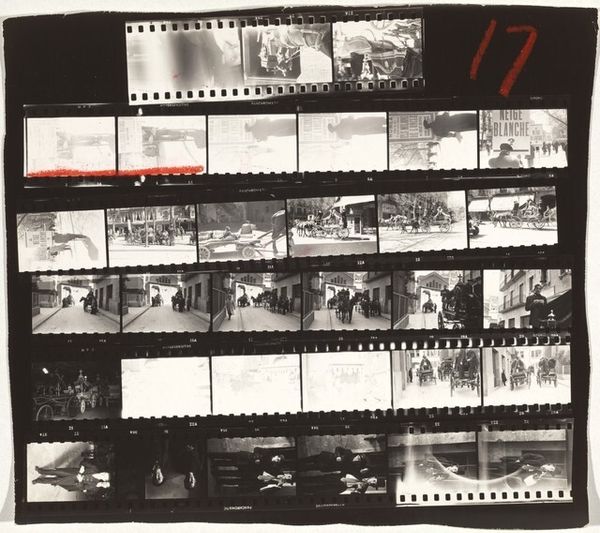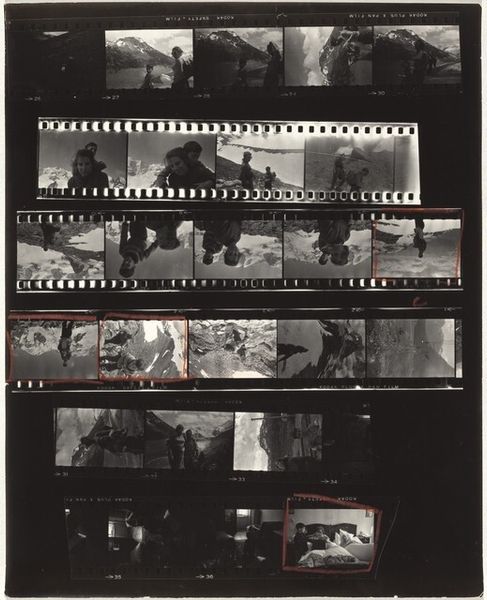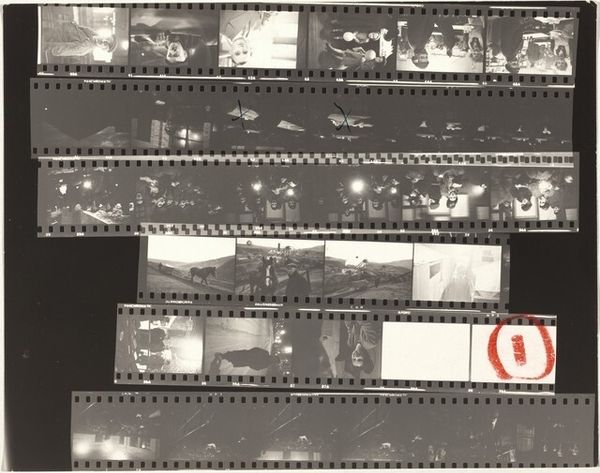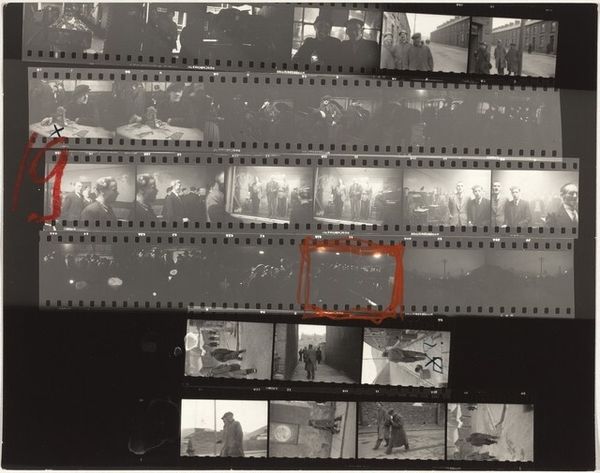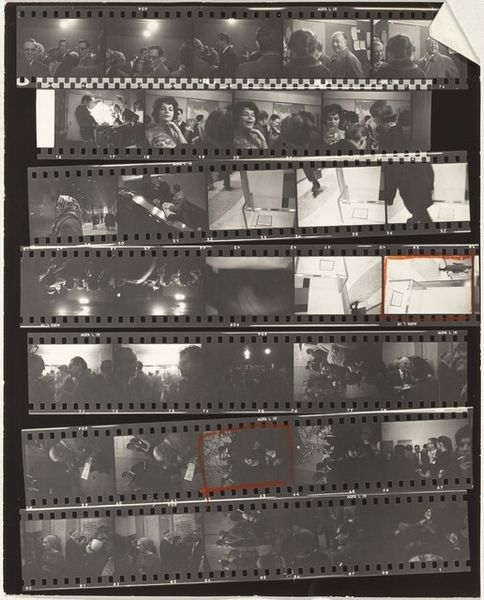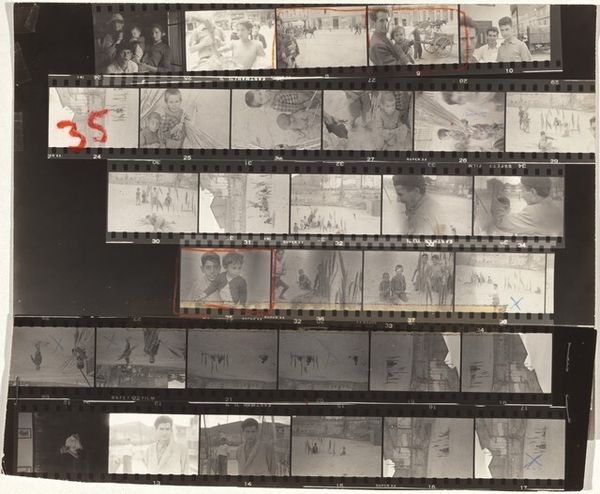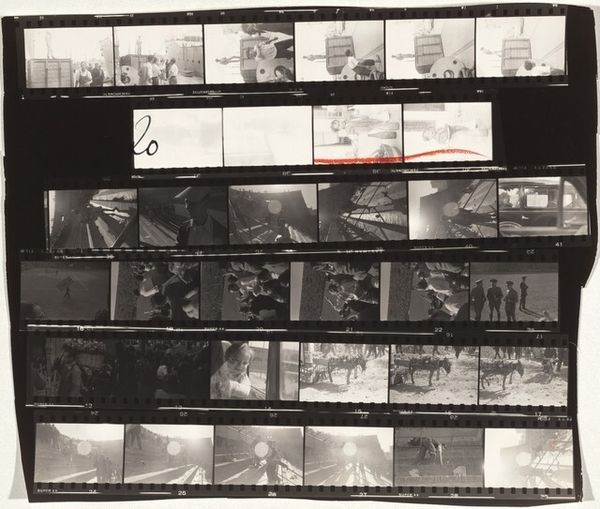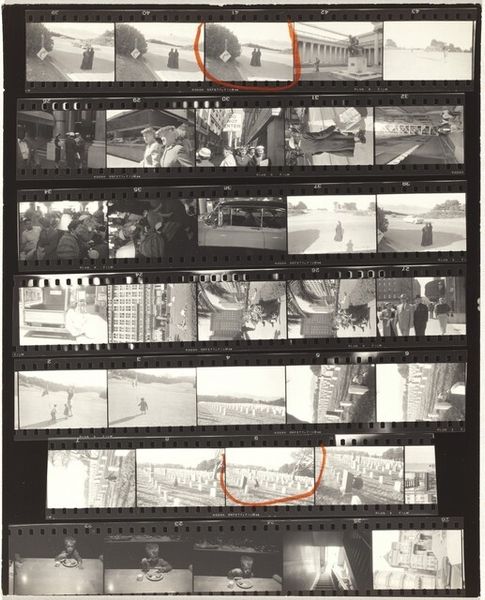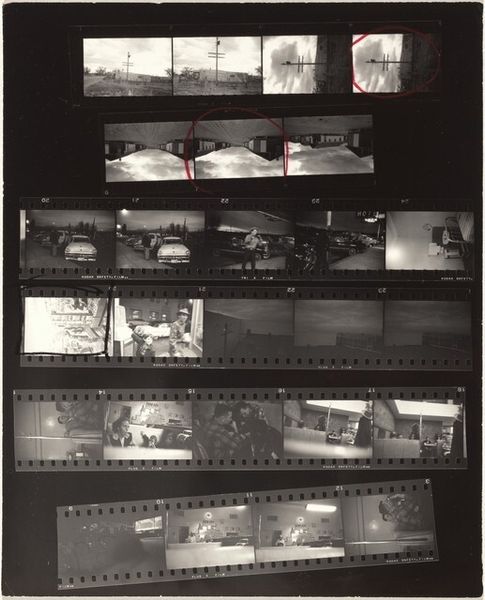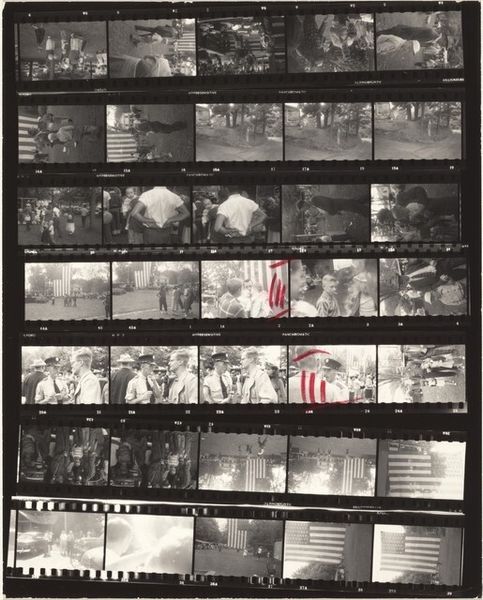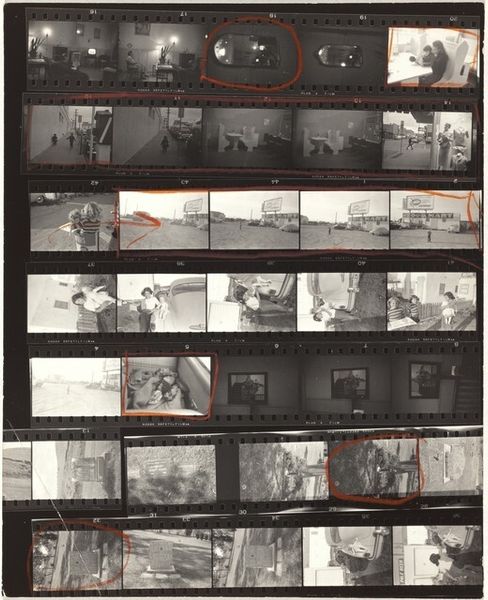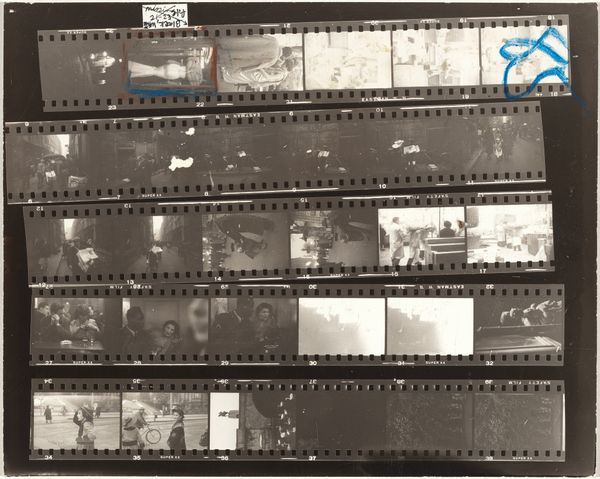
photography, gelatin-silver-print
#
narrative-art
#
landscape
#
archive photography
#
street-photography
#
photography
#
culture event photography
#
gelatin-silver-print
#
cityscape
#
modernism
Dimensions: overall: 18.5 x 23.2 cm (7 5/16 x 9 1/8 in.)
Copyright: National Gallery of Art: CC0 1.0
Editor: Robert Frank's "Trip south--Barcelona, Spain 9," a gelatin silver print from 1952, strikes me as a raw, almost exposed look into the photographer’s process. What jumps out to you about this piece? Curator: This isn't just about the "decisive moment," is it? The marked-up film strip exposes the artist's selection process, disrupting the idea of objective observation that photography often claims. How does the photographer’s "hand," quite literally through the markings, influence your understanding of 1950s Barcelona? Consider the context: post-war Spain, grappling with authoritarianism, its visual culture heavily censored. Editor: So, by showing his edits, Frank challenges the supposed neutrality of photography, especially in representing a place with so much political tension. Does this raw format then become its own form of commentary? Curator: Precisely. Frank wasn't just passively documenting Barcelona. He was actively engaging with the city, curating its representation. And who gets to do that? His choices, highlighted by these markings, tell a story not just of place, but also of power, of a gaze, possibly Western, framing a specific Spanish experience. Does it resonate with contemporary concerns about representation and cultural appropriation? Editor: That’s a great point. Thinking about how photography, especially in that era, could reinforce dominant perspectives, showing the choices made is itself a critical act. Curator: And that critical act remains relevant today. It pushes us to question every image we see: Whose story is being told, and who is doing the telling? Editor: This reframing—focusing on selection and power—has given me a lot to consider. Thank you. Curator: My pleasure. I am glad we've underscored that beyond mere aesthetic enjoyment lies the powerful narrative encased in images.
Comments
No comments
Be the first to comment and join the conversation on the ultimate creative platform.
